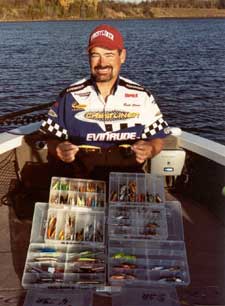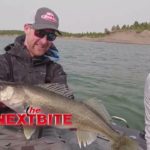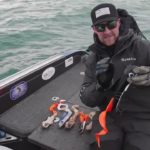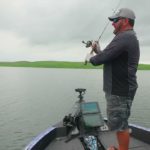So Many Crankbaits, So Little Time
 There’s more shapes, sizes, and colors than you can shake a stick it, and there are more being added all the time. Crankbaits that run from shallow to deep, with tight wobbles to wide hard thumping actions, and colors that run from lifelike to downright gaudy, there are plenty of options. The problem is that all of them have their time and place and what it adds up to is a good deal of confusion. With so many choices it’s difficult to know where to start but there are a few short cuts to putting together a solid crank bait presentation.
There’s more shapes, sizes, and colors than you can shake a stick it, and there are more being added all the time. Crankbaits that run from shallow to deep, with tight wobbles to wide hard thumping actions, and colors that run from lifelike to downright gaudy, there are plenty of options. The problem is that all of them have their time and place and what it adds up to is a good deal of confusion. With so many choices it’s difficult to know where to start but there are a few short cuts to putting together a solid crank bait presentation.
When it comes to selecting the right crank bait size does matter, most of the time. Smaller baits have proven themselves to cover more range as they can be suited for nailing walleyes of any size. A little #4 Jointed Shad Rap can be effective in attracting all sizes of fish including the larger models which lends itself to being a good search lure.
A small bait is a terrific choice for investigating new water as it will appeal to all sizes of fish present. Once you’ve found the biters you can try and refine the presentation further and see if you’re able to catch larger fish using a larger bait. For example; by running a Deep Tail Dancer or Husky Jerk though the same area where you’ve been dragging the #4 Jointed Shad Rap you can quickly find out if you’re able to put together a heavier catch using the larger baits. The magnum cranks may also be the secret to nailing a real giant and are always worth trying. The downside is you may have to trade in all of the steady action for a shot at a once in a lifetime poll bender.
Shape is another consideration and there are some subtle variations in the more effective walleye baits. For the most part the longer slender minnow imitating varieties are the baits most often used and excepted by walleyes all over the country. Baits like the Original Rapala and the Jusky Jerk have long slender bodies, while the Shad Rap is slightly more chunky. The Fat Rap is a small chunky bait that can be extremely effective at times and actually helped me secure a second place finish in a PWT Championship.
There’s one other shape and size that doesn’t fit into normal parameters and is the lipless variety like the Rattlin’ Rapala. The Rattlin’ Rapala is a hard vibrating and rattling bait that is really designed to be cast and is particularly effective when working shallow water like across a rocky bar or flat, or over the tops of emergent vegetation. It doesn’t lend itself well to trolling presentations because it’s hard to know just exactly how deep it’s running which is a critical factor in successful trolling.
What shape you decide on depends on a couple of things, like the available food source and the time of year. The Original Rapala produces an enticing action at the slowest speeds and lends itself well to cold water conditions. The Jointed Shad Rap and the Deep Tail Dancer produce a wiggle at slower speeds as well, and are effective throughout the various speed ranges. The Husky Jerk and Shad Rap require a little more speed and become more effective when water temperatures start to climb.
 Besides all of the shapes and sizes there’s the color factor to deal with and there are plenty of productive options. From the natural looking baits to gaudy fluorescents, the right color can make a difference. The perfect color can vary from one body of water to another but one of the most consistent for me has been the silver black and shad patterns. That’s not to say that other colors haven’t out produced these two on any given day because they certainly have, it’s just that sliver black and shad have been reliable producers on vastly varying bodies of water.
Besides all of the shapes and sizes there’s the color factor to deal with and there are plenty of productive options. From the natural looking baits to gaudy fluorescents, the right color can make a difference. The perfect color can vary from one body of water to another but one of the most consistent for me has been the silver black and shad patterns. That’s not to say that other colors haven’t out produced these two on any given day because they certainly have, it’s just that sliver black and shad have been reliable producers on vastly varying bodies of water.
How deep a lure would run used to be more of a consideration but really isn’t that much anymore, not when you can use a super line or lead core to get any bait to run at just about any depth you want. In fact the shallower running baits offer more flexibility as they can be fished in the shallowest water as well as the deepest.
There’s some argument as to just what exactly crankbaits imitate. Do they represent baitfish, crayfish, or something else? The
answer is yes, yes, and who knows. A crankbait’s shape and color certainly play a role but more importantly it’s a matter of where the crankbait is used. Baits that are worked across the top of a rock pile constantly banging into the bottom probably imitate a crayfish. Cranks that are run through the same area but are only ticking the top occasionally are more likely to mimic a baitfish, especially if it has a baitfish color pattern. Crankbaits trolled through open water are most certainly imitating baitfish.
Whatever the case it really doesn’t matter, as long as the walleyes approve.





